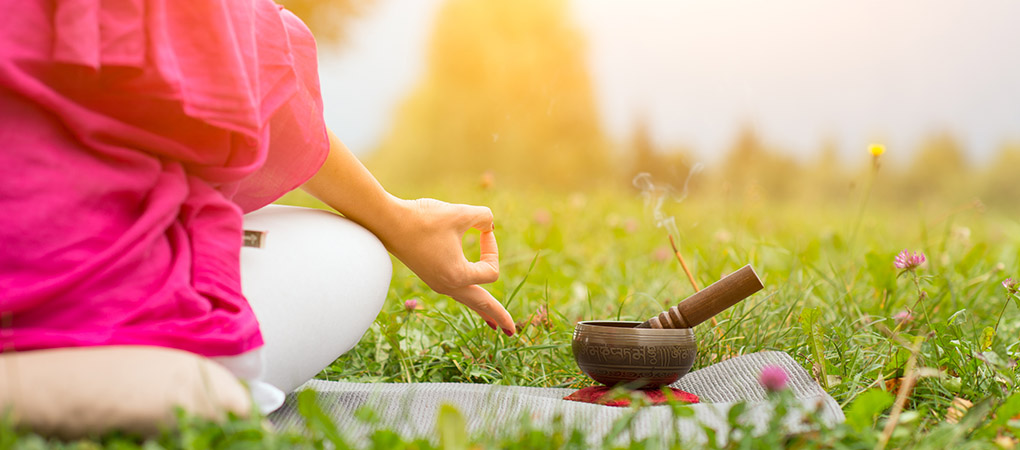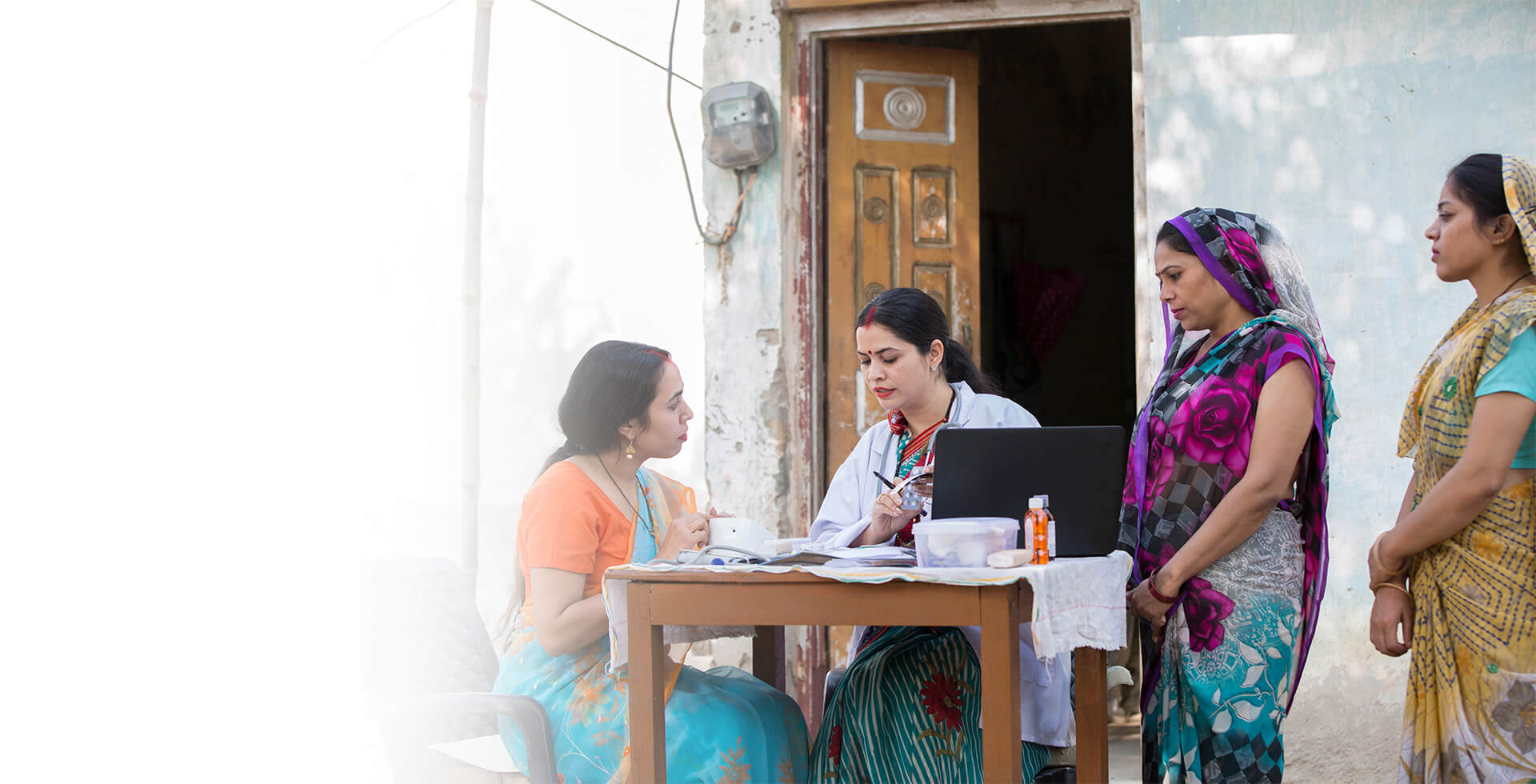Blog
Yoga & Ayurveda Integration: A Holistic System
Yoga

There is more to yoga and Ayurveda than just asanas and medicinal plants ! Both of them encompass all of human life and the entire universe. Both Yoga and Ayurveda are historically closely related and have developed in tandem with each other since ancient times. They have diverged in modern times, over the last hundred and fifty years, particularly outside of India, in which Yoga without Ayurveda was for a long time the norm. However, Yoga and Ayurveda are becoming reconnected again, not only in India but across the globe. Therefore, it would not be wrong to say that theirreintegrationis the reintegration of the circle of consciousness,life, healing and transformation! Therefore, it is important to understand the respective roles of Ayurveda and Yoga in the Vedic system.
History Of Yoga :
The genesis of yoga dates back to theage of Mantra Yoga of the Rigveda; the ancient Vedic text that came into existence five thousand years ago. The mantras mentioned in them of the Rishis promote a Yoga or union with the higher powers of consciousness in the universe, providing the basis for self-knowledge and cosmic knowledge that were later mentioned in the Vedanta and the Vedic sciences as well.
Vedic mantras, along with corresponding rituals and meditations, were commonly utilized both for spiritual development and for the achievement of the outer objectives of life by invoking the Devatas or the Divine powers behind nature and the soul. These vast energies are characterized mainly as four important elements in the Vedas; namely Agni (fire), Vayu or Indra (air and electrical vitality), Surya (sun) and Soma (moon). Their light forms are symbolic of yet more profound inward powers of Agni as speech, Vayu/Indra as Prana, Surya as Atman (soul), and Soma as the brain. A variety of such formulations exists in Vedic texts.
The Story Of Ayurveda :
Ayurveda emerged in the Vedic context as the Upaveda or supplementary Vedic text that focused on the well-being and overall healing of both body and mind. Ayurveda initially emerged as an application of Vedic mantras and not as a different train. Every Vedic text available has a potential Ayurvedic or recuperating application, particularly Vedic customs and mantras. Numerous Vedic practices are said to allow 'sarvayur', which means life span as well as the totality of life, as one of their essential objectives.Recuperating and life span are thought to be common consequences of Vedic practices, with some Vedic hones particularly identified with these.
Ayurveda is normally thought to be a branch of the Atharva Veda, which carries the most mantras pointed particularly at recuperating. In any case, parts of Ayurveda can be found in all the Vedas and are inborn in the Vedic gods (Devatas) and in the Vedic cosmology.
'Vedic Yoga, for example, we find in the Svetsvatara Upanishad, underlines how the Vedic Devatas or inestimable energies like Agni, Vayu and Soma work in the mind as powers of interior reconciliation and self-acknowledgment.
Vedic Chikitsa :
Chikitsa is a Sanskrit term for therapy. Ayurvedic course readings like Charak, Sushruta, and Vagbhatta all contain segments called ChikitsaSthana, or the 'areas identifying with chikitsa or treatment'. They have complementary areas like NidanaSthana, 'segment concerning to diagnosis', and ShariraSthana, 'segment identifying with the embodied soul', which incorporates the anatomy and physiology of the physical body. The Ayurvedic perspective of our embodied nature (body, brain and soul) and how itworks, the reasons for infection and the treatment of illness are altogether connected in an excellent, clear, and wonderfulsystem of optimal health and ideal well-being.
Ayurveda addresses all areas of medicine, which includes diet, ayurvedic medicines using herbs, drugs, surgery, bodywork, and its own extraordinary clinical methods like panchakarma. It acquires ritual, mantra and meditation for healing of both the body and the mind. Furthermore, it imparts life-style instructions for health, life span, and avoiding illness and also exceptional procedures for rejuvenation of body and mind. It incorporates the acts of Yoga from asana and pranayama to mantra and reflection as a major aspect of its recuperating tools.
Yoga writings like the Yoga Sutras have segments like Samadhi Pada- 'segment identifying with Samadhi or profound meditation';SadhanaPada- 'area identifying with spiritual practice';VibhutiPada- 'segment identifying with yogic powers'; and KaivalyaPada- 'segment identifying with liberation and freedom'. The yogic study of consciousness, the inconspicuous energies of prana and mind, and different kind of spiritual practices are all associated with each other. Yogic writings contain topics of meditation, concentration, mantra, ritual, pranayama, asana, and related factors but as part of spiritual practice, not as a therapy.
We don't discover any Chikitsa Padas or treatment segments in the standard Yoga writings. This is because the concerns in classical Yoga is related toSadhana and not Chikitsa, which was viewed as the field of Ayurveda. Above all, there is no discovery of disease, pathology, diagnosis, or ayurvedic treatment strategies apart from the approach of Ayurveda in Yoga writings. There is no Yoga system of medicine as far as diagnosis, pathology, and treatment, apart from Ayurvedais concerned.
What is discovered in standard Yoga writings are discussions of the pranas, senses, mind, nadis, and chakras, worship of deities, discussion of the inner self and nature of consciousness, and also the type of samadhi or inner assimilation. Malady is briefly discussed in some Yoga writings as it is viewed as one of the fundamental obstructions to Yoga practice. In any case, when this occurs, the dialect of Ayurveda is normally employed.
Integral Yoga And Integral Ayurveda :
The term Yoga itself means to connect, combine, balance, or integrate. A genuine yogic approach is characteristically an integrative approach, orchestrating body, prana, senses, mind, and consciousness. It can't be minimized to the body alone. A yogic way to healing isn't a specialization or a side-line procedure but involves a combination of all levels and aspects of healing. That is the reason classical Yoga has an eightfold approach from lifestyle practices and values through asana, pranayama, to samadhi. If we lessen Yoga to asana, we are not practicing Yoga or an integrative approach but rather falling into a similar trap of principally concentrating on the external material reality and forgetting about the inner reality of prana, mind, and consciousness.
A real Yoga treatment must consider all eight limbs of Yoga. It can't simply seclude the physical aspects of Yoga like asana. The initial two of the eight limbs of Yoga, the yamas and niyamas, the yogic standards and practices of right living, provide the foundation important to support any spiritual or healing practice. They likewise give a perfect implicit rule for doctors, therapists, and Yoga educators.
We can call asana the 'outer pharmaceutical' of Yoga. It essentially treats musculo-skeletal disorders, yet it benefits numerous other conditions and gives an ideal form of exercise to everyone. However, without the correct eating routine, its recuperating possibilities are constrained, as bodily action will reflect the nutrition the body recieves. Asana works best with regards to Ayurvedic dietary and lifestyle recommendations
Pranayama can be known as the 'inward medication' of Yoga. It brings prana or essential vitality straightforwardly into the body and can be utilized to coordinate prana in different ways as required. Pranayama straightforwardly impacts the doshas or organic humors of Ayurveda (vata, pitta, and kapha), which are modifications of prana. Pranayama basically treats states of the respiratory, circulatory, and nervous systems however through these it has a powerful impact on all physical and mental conditions. Pranayama is an extraordinary guide for the utilization of herbs and functions much like them to redress the development of energy inside our physiological and psychological frameworks.
As all types of healing include changing the development of prana and expanding the recuperating energy of prana, pranayama is an essential and direct type of healing for body and mind, while asana is indirect and secondary. This implies that a real Yoga treatment notwithstanding for the physical body must underline pranayama over asana and utilize asana with regards to pranayama.
Pratyahara is the disguise of energy vital for profound healing or for genuine meditation to happen. Not achieving the phase of pratyahara means we are still not practicing Yoga as a sadhana or spiritual practice. In pratyahara, one pulls back the prana and mind within. For genuine recuperating, the body and mind must be placed in a casual relaxed state and the vitality coordinated inside. Many types of treatment like massage or panchakarma are to a great extent stimulated types of pratyahara, putting the patient into a state of profound rest in which all toxins can be expelled from the body.
Yoga As A Philosophy :
Dharana is the essential centralization of mind and the improvement of the power of attention required to maintain any recuperating practice. Dhyana is reflective contemplation, the internal balance of awareness, which enables the mind to mend itself. Samadhi is the unitary perspective, prana, and awareness that builds up the full healing energy of body and mind and discharges us from physical, emotional and spiritual suffering. These higher parts of Yoga, help in giving the positive attitude and perspective for healing to take place on any level.
The inner practices of Yoga (dharana, dhyana, and samadhi) or the inward aspect of Yoga are essential for treating the mind and utilized as a part of mainly to deal with psychological disorders. This implies that classical Yoga treatment is fundamentally a psychology employing mantra and meditation. Yoga as connected by Ayurveda is a standout amongst the most capable methodologies for recuperating the mind and emotions that is accessible in the world today.
Conclusion :
It is vital to reintegrate Yoga and Ayurveda in order to get the complete healing and spiritual prospective of each. Bringing Ayurveda into Yoga gives a yogic and Vedic arrangement of medication to take into account the full healing application of all facets of Yoga. It gives an analysis and treatment in concordance with Yoga philosophy, and in addition an eating routine and herbal treatment that follows the spiritual approach of Yoga. Bringing Yoga into Ayurveda includes a spiritual and mental aspect to Ayurvedic treatment, without which Ayurveda has a tendency to get decreased to a physical model in which its full Vedic healing powers can't be effectively figured out.
Ayurveda imparts suitable life-style recommendations for Yoga Practice and provides a complete background to uncover the complete healing potential of all facets of Yoga. Yoga provides the spiritual and psychological basis for Ayurveda and its higher applications.
Both Ayurveda and Yoga are required for a truly encompassing and profound way to deal with medication and recuperating, but with Ayurveda giving the medical foundation and Yoga, the spiritual objective and practices. This is the first and original Vedic plan. The way to a complete Yoga treatment and Yoga system of medicine lies in re-establishing Yoga's connection with Ayurveda. This reconnection of Yoga and Ayurveda will also provide the premise to a real exchange with modern medicine not only addressing specific therapies but also the real causes of disease and how to keep up wellbeing and prosperity in society. Joining Yoga and Ayurveda in their full applications and in the more prominent setting of Vedic science offers a total arrangement of prosperity for body, mind, and consciousness.













